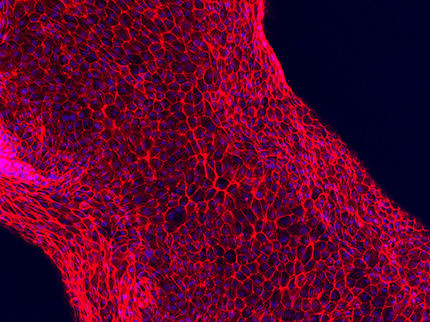New way to prepare molecules for drug testing
Metal-catalyzed cross-couplings of carbon bonds could enable creation of libraries of drug candidates to accelerate drug discovery
Advertisement
James Bond had his reasons for ordering his martinis “shaken, not stirred.” Similarly, drug manufacturers need to make sure the molecules in a new drug are arranged in an exact manner, lest there be dire consequences. Specifically, they need to be wary of enantiomers, mirror-image molecules composed of the same atoms, but arranged differently.
“One mirror image could be therapeutic while another could be poisonous,” said Dr. Mark R. Biscoe, assistant professor of chemistry at The City College of New York. The classic case is thalidomide, a drug marketed in the 1950s and 1960s to treat morning sickness, which resulted in serious birth defects.
Professor Biscoe led a team of researchers at CCNY that developed a new method for preparing libraries of single-enantiomer molecules for therapeutic and toxicity studies that is faster and potentially less costly than methods now used in the pharmaceutical industry. Their findings were reported in Nature Chemistry.
Currently, drug developers typically rely on a chiral resolution process whereby compounds with roughly equal parts of the two enantiomers are separated into the individual enantiomers. Bioenzymatic processes can also be employed to generate single-enantiomer molecules. These strategies are wasteful and costly, Professor Biscoe explained.
He and colleagues found that a metal such as palladium could be employed to achieve a cross-coupling reaction with a single-enantiomer molecule without impacting the integrity of the mirror image formed in the product. By doing so, they could isolate one mirror image for evaluation as a drug candidate.
“By using a single-enantiomer partner in a cross-coupling reaction, we can rapidly generate a diverse library of biologically active molecules for use in drug screening,” he said.
Most read news
Topics
Organizations
Other news from the department science

Get the life science industry in your inbox
By submitting this form you agree that LUMITOS AG will send you the newsletter(s) selected above by email. Your data will not be passed on to third parties. Your data will be stored and processed in accordance with our data protection regulations. LUMITOS may contact you by email for the purpose of advertising or market and opinion surveys. You can revoke your consent at any time without giving reasons to LUMITOS AG, Ernst-Augustin-Str. 2, 12489 Berlin, Germany or by e-mail at revoke@lumitos.com with effect for the future. In addition, each email contains a link to unsubscribe from the corresponding newsletter.


























































